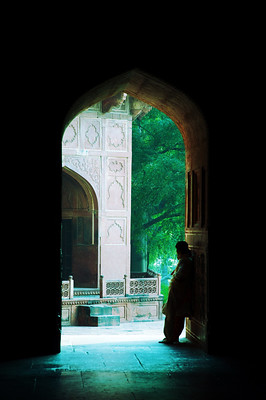On 17 May 2021, local government authorities in the northern India state of Uttar Pradesh demolished one of the oldest and most revered symbols and houses of worship for the nation’s Muslims: the 100-year-old Ghareeb Nawaz Al Maroof Mosque. In the broad daylight, police and security officials entered the mosque property, evacuated all nearby people, and ushered in bulldozers to tear the mosque to the ground and dispose of debris into an adjacent river. Civilians that had for years and families that had for generations frequented the mosque watched on helplessly.
For the entire month of May and prior to its demolition, the local administration had banned worshippers from entering the mosque; by 15 May, the committee in charge of the mosque was sent a notice that the building allegedly was unlawfully located on government-owned land and that it had been causing “traffic disruption”. In response to the abrupt communication, mosque officials responded by explaining that the building was located 100 feet away from the road, provided utility bills dating back to 1959 proving that the mosque was located on non-government land, and even obtained a High Court order that mosque eviction and demolition could not be carried out until at least 31 May.
Despite myriad evidence of the mosque’s legal presence and operation, authorities violated the High Court order and commenced with the demolition. For a house of Muslim worship to be torn to the ground is unacceptable, but not surprising given the leadership of the state. Uttar Pradesh’s Chief Minister, Yogi Adityanath, has repeatedly “made speeches laced with Islamophobia, referred to Muslims as terrorists, and passed legislation openly discriminatory to Muslims.”
Even local officials of Barabanki district have supported the demolition. The magistrate, Dr. Adarsh Singh, claimed that “the action was taken as per court order. There was no mosque. It was an illegal structure where anti-social elements were staying.” The court order Dr. Singh refers to in his comments is an 3 April order by the SDM Court of Ram Saneh Ghat which stated that the mosque was illegal because “no one from the Masjid Garib Nawaz Al Maroof Committee contested the charges”. On the contrary, since the 3 April SDM Court order, the mosque committee – as previously mentioned – has supplied ample proof of the mosque’s legality and even provided a Hight Court order that overrides the former.
In response to the mosque’s demolition, numerous Muslim residents of Barabanki district have fled, because they feared that “more people would be implicated in fake cases”. These ‘fake cases’ one anonymous Muslim resident refers to are those that have been raised against peaceful protesters in months prior. In mid-March, 180 civilians – every one of them Muslim – were detained for demonstrating against the imminent destruction of a separate mosque in Barabanki; some were even falsely charged with attempted murder of police officials.
The Uttar Pradesh Sunni Central Waqf Board has publicly condemned the demolition of the Ghareeb Nawaz Al Maroof Mosque, calling it a “patently illegal and high-handed action” and has announced that it will be seeking remedy with the Allahabad High Court, which they hope will order the mosque’s reconstruction, a comprehensive judicial inquiry, and punishment for the authorities involved in the destruction.
Cover image by Chris JL on Flickr (CC BY-NC-ND 2.0)

